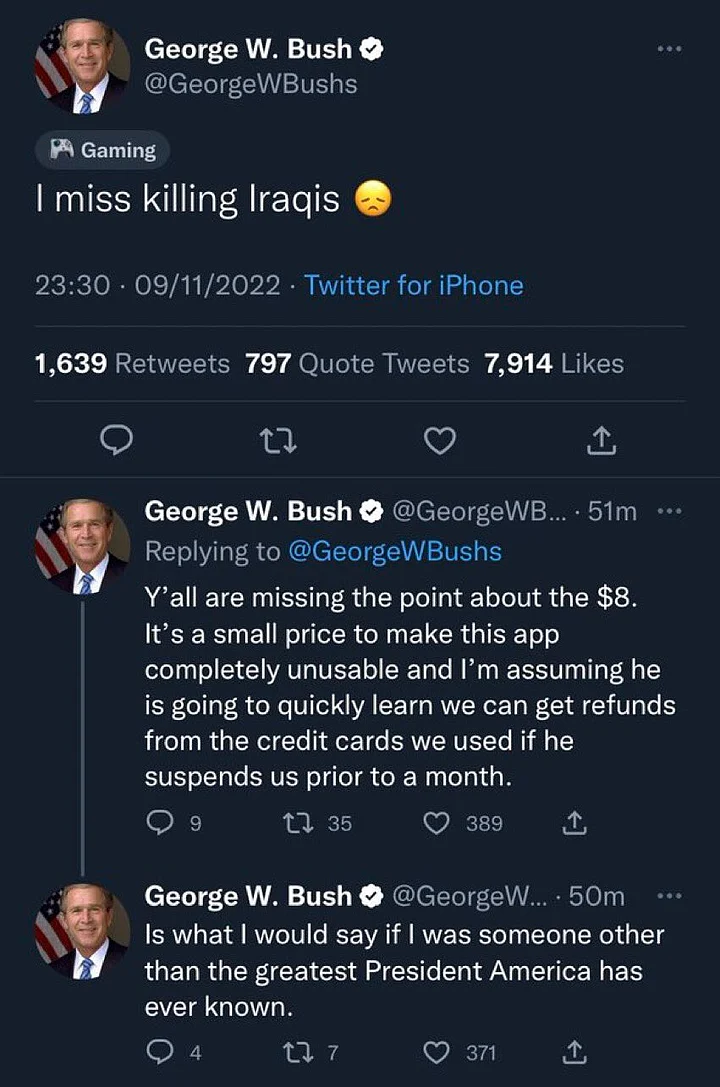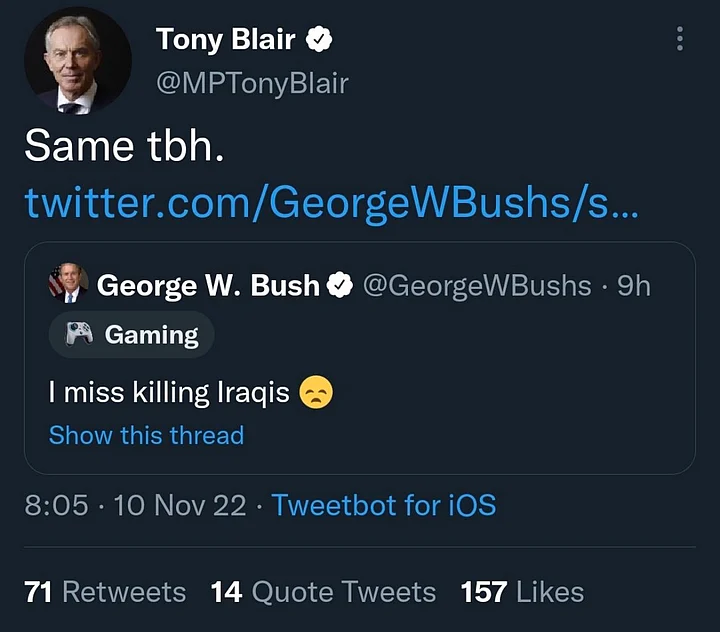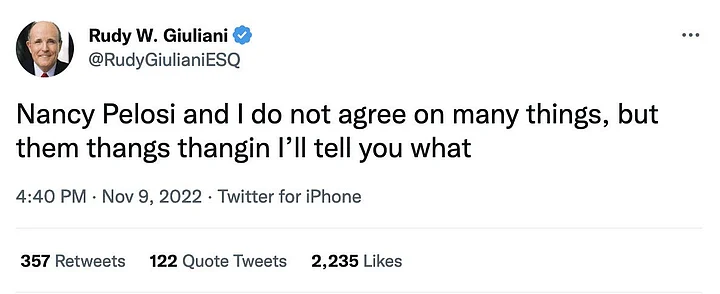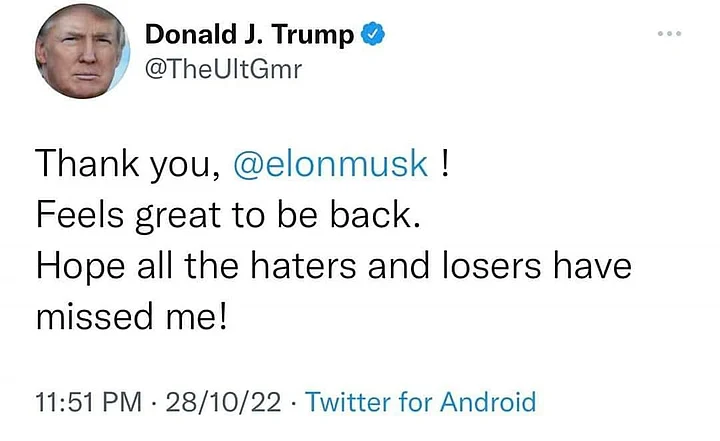(Editor’s Note: The story was first published on 12 November 2022 and is being republished from The Quint’s archives after Twitter implemented its plan of removing legacy verified accounts and opening the verification feature for all Twitter Blue subscribers.)
Even though Twitter only has a fraction of the users that social media platforms like Facebook, TikTok, Instagram, YouTube, etc. or messaging applications like WhatsApp, Telegram, etc., have, it has historically punched well above its weight in terms of its importance in the public sphere.
Frequently used by journalists, activists, public figures, politicians, and celebrities, this is true of the platform in India as well, where with an estimated 25-30 million users, it is significantly smaller than other social media platforms with hundreds of millions of users.
As users debate whether the Musk acquisition represents the beginning of an end for the platform, Elon Musk has set about implementing his vision to “authenticate all real humans”, something he believes will “defeat the spam bots.”
After months of speculation about specifics, a new tier of Twitter Blue will include that vaunted “blue checkmark” on the profiles of those willing to pay for it. And while this feature is expected to be available to users in India in about a month’s time, the specifics and, ultimately, the utility of this move away from a ‘lords and peasants’ system could change significantly by then.
VERIFICATION NOT ENDORSEMENT
Just like the ‘retweets not endorsement’ disclaimer many Twitter users add to their profiles, verification was never meant to be an endorsement. As this case study by The Copia Institute points out, Twitter started verifying accounts of “well-known accounts that have problems with impersonation or identity confusion” in 2009.
The goal was only to match the identity of the account owner to the account.
While noting that this was an experiment, Twitter also said that it would not be able to verify everyone who wanted a verified account and the blue tick that came with it.
It was never meant to be an endorsement from Twitter. In fact, when Twitter suspended the verification process in 2017 (after opening it up in 2016), it cited this perception as an endorsement as a reason.
However, perhaps due to the discretion Twitter exercised, or inconsistency with which this was given out to users, or just human nature, it came to be (and likely still is) perceived as one.
There seems to be an accompanying misconception that verified users would also conduct themselves well on social media platforms.
This ties into another mistaken belief that ending the ability to remain anonymous will address many of the problems we face on social media today.
But matching the identity of an account owner to an account is not a meaningful control on the ability or intention of that user to share accurate information.
The combination of societal fault lines and an information ecosystem which prioritises engagement and capturing attention (note that this is as true of news media as it is of social media) create incentives for sharing partisan, sensational information (or framing it as such) and not necessarily for sharing accurate information.
In fact, there are many instances of notable public figures sharing false/inaccurate information, engaging in hate speech benefitting from such acts rather than being censured for it.
Thus, neither verification nor “ending anonymity” should be considered or projected as an effective measure for dealing with the current state of information dysfunction.
But let’s assume we are able to look past these flawed assumptions for some time or you simply disagree. Will the new system make things better or worse?
A lot depends on the implementation, and the early signs are not encouraging.
First, it appears that no identity verification is actually being carried out. This makes impersonation highly likely because people associate the blue tick with verification, and verification with identity verification (other platforms still do this).
And in the context of ‘bots’ all it potentially does is increase the cost of running one - which may or may not be worthwhile when one considers the promise of being prioritised.
Even Twitter’s old verification process (which actually attempted to verify against identification) has been gamed in the past.
POLICY, ON THE FLY
Third, the announcement, rollout and subsequent withdrawal of a new ‘official’ badge to distinguish between Twitter blue subscribers and a ‘select’ number of already verified accounts seemingly recreates the opacity of the verification system, with the only differences being the colour of the badges and where they appear on someone’s timeline.
One can expect that only a tiny fraction of ‘extremely online’ Twitter users are keeping up with these fast-paced, ad hoc changes. For most, there will be some combination of misplaced trust in the blue ticks, or a loss of trust due to confusion.
With that in mind, it is worth asking the question who is likely to be the most affected by any new risks this opens up.
There have already been notable instances of impersonation attempts, and new methods continue to be found. Some of these may already have been suspended. But that’s likely because the impersonation targets were extremely high-profile individuals (like Elon Musk, Donald Trump), such that the attempts were obvious (they still needed to be caught).
(Swipe right to view screenshots of verified accounts impersonating notable people.)
Some were to make a statement.
The situation changes when one considers that Twitter has cut nearly half its workforce, and people in key positions continue to resign. And that the greater risk is to journalists, activists (especially those who express dissent) who will lose their verified status, and those who have lost the option to be verified in the future (imperfect as the process was).
Not only are they likely to be impersonated, but the perpetrators may also benefit from the perception that the blue tick carries.
This could also create a legitimacy crisis for official sources of information that may not get any future variation of the ‘official’ badge, and any that are setup in the future (as they may not have a way to be marked verified or official in the absence of a defined process).
Both these situations are also likely to be exacerbated in countries outside North America and Western Europe.
More broadly, this situation is indicative of what happens when the accountability incentives of an important part of the public sphere change for the worse.
In this case, Twitter’s move from being a publicly traded corporation to a single-owner entity, has done just that. The pertinent question to ask ourselves is how we got here
(Prateek Waghre is the Policy Director at the Internet Freedom Foundation and is the author of The Information Ecologist, which focuses on the information ecosystem. This is an opinion piece and the views expressed are the author’s own. The Quint neither endorses nor is responsible for them.)





